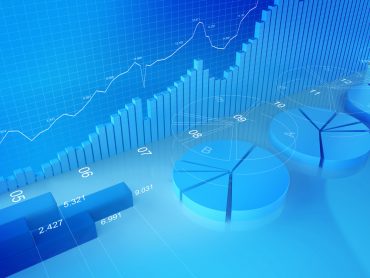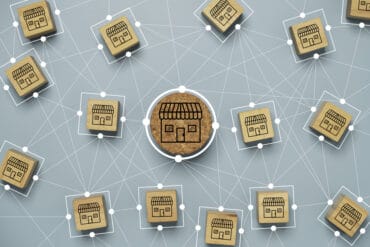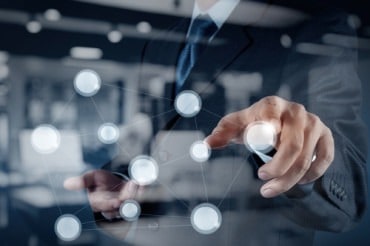
As the volume of video data continues to grow, the ability to understand and act on it — in real time — will become a competitive differentiator across sectors. That’s where visual analytics comes in.
In an age where data is abundant and time is short, visual analytics and real-time visual intelligence based on such analytics are emerging as one of the most transformative capabilities for industrial operations. It goes far beyond traditional video monitoring or motion detection — offering a deeper, data-driven understanding of what’s happening in real-world environments. For industries such as utilities, manufacturing, and security, visual analytics offers a way to perceive, process, and act on visual data in near real time. That results in smarter operations, faster decisions, and enhanced safety and efficiency.
To understand its potential, it makes sense to take a deep look into what exactly visual analytics is and what information it can deliver.
Visual analytics is all about turning visual data — especially from video streams — into actionable insights using advanced algorithms, AI, and machine learning. It combines image processing, computer vision, and contextual awareness to detect patterns, anomalies, and key events in dynamic visual environments.
While traditional surveillance or simple motion detection systems flag movement, visual analytics goes further by identifying what moved, classifying it, understanding its context, and even predicting what might happen next. For instance, a standard camera might notice motion on a factory floor, but a visual analytics system can determine whether it was a person, a vehicle, or a falling object — and whether that motion represents a safety hazard, a maintenance issue, or business as usual.
Why Visual Analytics Matters
Cameras have been ubiquitous in industrial environments for years, but the raw video they capture is only as valuable as the insights they can generate. Motion detection, zone-based alarms, and basic video recording are useful but limited. They can tell you that something happened but not why, how, or what to do next.
Visual analytics makes video intelligent. A system using visual analytics can deliver enhanced features and capabilities. Those capabilities often include:
- Object detection and classification: Is that a person, forklift, or unauthorized vehicle?
- Behavior analysis: Is a manufacturing line machine showing signs of fatigue or distress?
- Anomaly detection: Is a certain action normal for the operational setting in which it is being used?
- Predictive alerts: Will this equipment likely fail based on visual wear patterns?
- Contextual understanding: Are events happening in a way that correlates with other operational data?
These insights can be fed into enterprise systems, displayed in dashboards, or used to trigger real-time alerts and automation — effectively closing the loop between perception and action.
Applications Across Industries
Visual analytics has appeal in many industries, especially as organizations digitally transform. Some examples of use cases include:
Utilities
Utilities can better manage their sprawling infrastructure across substations, pipelines, transmission lines, and more. Much of this infrastructure is in remote or hazardous locations. Visual analytics allows utilities to:
- Detect vegetation encroachment near power lines.
- Monitor transformer health through thermal imaging.
- Identify unauthorized access or tampering in substations.
- Track equipment corrosion or structural degradation over time.
With the aid of drones, fixed cameras, and AI-powered analysis, utilities can shift from periodic manual inspections to continuous, proactive monitoring — dramatically reducing the risk of outages or disasters.
Manufacturing
Manufacturers face pressure to optimize efficiency, ensure safety, and minimize downtime. Visual analytics supports these goals by:
- Monitoring assembly lines for product defects.
- Tracking worker safety compliance, such as PPE usage.
- Detecting bottlenecks or anomalies in the process flow.
- Alerting on machine misalignments or early signs of failure.
By layering video intelligence on top of existing sensors and control systems, manufacturers gain a more holistic view of their operations — enabling real-time decisions that keep production humming.
Security and Public Safety
In security-sensitive environments, time is everything. Visual analytics elevates traditional video surveillance by:
- Automatically identifying suspicious behaviors (loitering, tailgating, trespassing).
- Counting people or vehicles to detect overcrowding or congestion.
- Monitoring crowd sentiment or movement patterns in public spaces.
- Recognizing license plates, faces, or objects of interest.
Whether it’s protecting critical infrastructure or managing public events, visual analytics enables faster threat detection and more effective response — often before a human operator would even notice something was amiss.
See also: The Power of Contextual Decisions for Real-Time Visual Intelligence
The Role of Edge Computing and Low-Latency Processing
To make visual analytics truly powerful, it must also be fast — and that’s where edge computing comes in. Pushing video data to the cloud for analysis often introduces unacceptable latency, especially when decisions must be made in milliseconds.
By performing processing directly on edge devices — cameras, local servers, or gateways — organizations can:
- Analyze video in real time, close to where it’s captured.
- Reduce bandwidth costs by sending only insights or anomalies to the cloud.
- Maintain operational continuity even in low-connectivity environments.
- Improve data privacy by avoiding mass transmission of raw video footage.
Edge computing is especially critical in environments with high camera density or mission-critical systems, where delays can mean missed opportunities or safety risks.
Going hand-in-hand with edge computing, low-latency processing is also needed to ensure that insights can be acted on immediately. This tight feedback loop between observation and response allows visual analytics to drive automation, not just awareness.
Toward Real-Time Decisions and Autonomous Operations
The ultimate goal of visual analytics is to help organizations do more — faster, smarter, and more autonomously.
Consider the example of a manufacturing plant using visual analytics to detect microfractures in parts as they move down the assembly line. With edge processing and machine learning models trained on past defects, the system can flag a problem instantly, divert the part for further inspection, and notify the relevant team — all without halting production or waiting for a technician to review footage.
A utility company might also use thermal cameras and AI to detect overheating equipment in the field, triggering preventive maintenance before a failure occurs and potentially avoiding outages that would affect thousands of customers.
Visual Analytics Is the Future of Operational Awareness
We live in a visual world, and machines are rapidly catching up to our ability to perceive it. For executives and data scientists alike, visual analytics represents a convergence of AI, IoT, and operational technology — delivering not just better visibility but real-time, data-driven control.
To harness this potential, organizations need to think beyond traditional cameras and consider:
- Investing in AI-ready edge devices.
- Building pipelines for low-latency, high-volume video processing.
- Integrating visual insights into broader analytics platforms.
- Ensuring data governance and privacy are baked into deployments.
As the volume of video data continues to grow, the ability to understand and act on it — in real time — will become a competitive differentiator across sectors.





